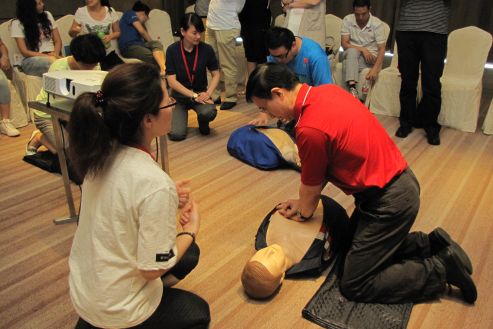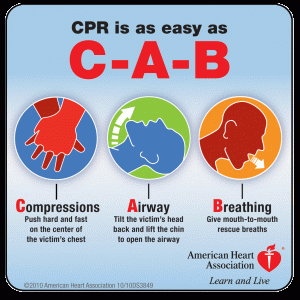The ‘sudden’ need for CPR
By: Daniel Otero
With the rapidity of action, in a mad rush, CPR (Cardio Pulmonary Resuscitation) fever is taking hold of China. And organizations are more than ever investing in training and the purchase of defibrillators. The purpose in turn is to be able to respond to an emergency in eight minutes or less, before death occurs.
When a person is having a heart attack or choking to death because of food lodged in their system, CPR can be quite useful.
Heck, I learned it first in 1988 and later became an instructor with the International Red Cross. Held my credentials till 2008, but later, as I came to China–allowed it to expire. Sorry guys, but it’s the truth!
The biggest problem was back them, the lack of places to get certified in China. But now there’s a ‘sudden’ explosion of CPR training throughout the country and times are changing; especially in the last decade.
Why is this happened?
Well, it began because more often than not, a person suffered an accident and curious-onlookers just stood around without knowing what to do. From this sharp criticism, CPR programs began to be developed through the country.
Because, and as I stated before, when a person has a heart condition, the rescuer needs to get some form of air and flow into their system. If not, the person will pass away right then and there!
In truth, and it’s a reality in China, ambulances take an average of 20 to 45 minutes to arrive. A little too late for emergency services to really do anything.
Plus, if to not help a stranger, then people learn it to assist friends and loved ones in need!
The training with CPR is split up in two main techniques which ought to be learned: CPR itself and the Heimlich maneuver.
The first requires breath or breaths and subsequent chest compression to the heart to help the person literally live again! This is done in a repetitive cycle, till the person resuscitates!
The second is the Heimlich, this is one to help choking victims.
The techniques learned in CPR classes are to rescue not only adults, but also newborn babies.
This is fantastic, considering that an emergency is bound to happen at anytime. Without prior warning, a person must react quickly by telling others to call 911 or 120 in China.
After, comes the actual start of CPR. Once it begins, it has to continue till the ambulance arrives, a substitute comes along or you’re too tired to carry-on.
How CPR has helped me in my life?
Although, I have had prior knowledge of CPR for 30 years. It’s never enough.
It’s important to go for a training on a yearly basis. Because better methods of salvation are implemented and new techniques are always coming along.
By learning CPR, I have been able to get involve and assist four people.
Further, I’ve been teaching it to my students for years. Even to those rebellious enough to not listen and tell me, “I’m not a doctor!”
And I quickly and angrily retort, “What if it’s your father or mother, and you cannot get to a doctor on time? You missed an opportunity about learning something useful and now, you are the difference between your loved one being alive or dead!”
Some students have listened and have been able to use it in their own lives.
That is what CPR is all about, instructing one person at a time. Saving one person at a time!








